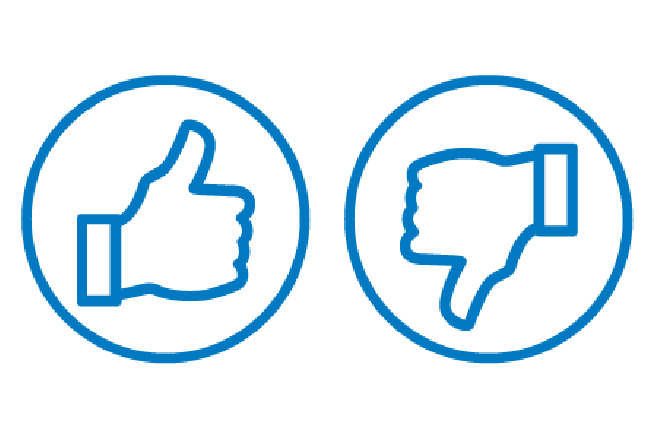Keeping Kids Safe From Cyberbullying
Jul 02,2024
Read Time 4 Minutes

Bullying is nothing new. But bullying today is different. It’s moved from playgrounds to online platforms. In that digital space, bullying is not only hurtful, but it’s also often anonymous, relentless, and hard for others to detect.
When bullying happens online, it’s called cyberbullying. With smartphones and social media playing such a big role in teen and preteen culture, it’s a growing concern. A 2023 study by the Cyberbullying Research Center found that 54% of students said that cyberbullying was a big problem in their schools, and nearly 27% reported they had been bullied online in the 30 days before the survey.
Parents play an essential role in keeping kids safe from online bullying. The following information and tips will help.
Understand What Cyberbullying Is
Cyberbullying happens when someone repeatedly and intentionally intimidates, mistreats, or harasses an individual through digital devices, such as smartphones, computers, and tablets.
This hurtful and harmful behavior includes sending, posting, or sharing
:
- Online threats.
- Mean or aggressive texts, posts, or messages.
- Unkind or unflattering rumors about a person.
- Embarrassing personal information, pictures, or videos, including AI-generated fake content.
In short, cyberbullying is anything posted online that is meant to hurt, harass, or upset someone else. It can lead to fights, social rejection, deep distress, fear, and self-harm.
Know The Signs Of Cyberbullying
As you navigate online activity and smartphone use with your child, you’ll want to be aware of the signs of cyberbullying, as identified by the Cyberbullying Research Center.
If your child is being bullied online, you might notice that they:
- Get upset, nervous, or jumpy when using their device.
- Stop using their device unexpectedly.
- Hide their screen or delete their browsing history.
- Avoid in-person social gatherings or frequently want to come home from school.
- Aren’t sleeping well or change their eating habits.
- Have more headaches or stomachaches.
- Seem depressed or withdrawn.
- Inflict self-harm or exhibit risky behaviors.
Learn How To Respond To Online Bullying
If your child is being cyberbullied, it’s crucial to act, but the Child Mind Institute suggests taking time to talk through the situation with your child and develop a plan of action together.
Your plan might include the following steps:
- Don’t reply or respond. The bully wants to get a reaction from your child, so it’s best for them and you to stay silent.
- Collect facts. Take a screenshot or copy and save a message before deleting it.
- Block and unfriend: Block the number on your child’s phone if it’s a text message. Take the person off their buddy or friends list if it’s through IM or a digital platform.
- Report it. Consider telling teachers about the situation. If the bullying happens online, it might also happen in person. If the bullying occurred on a website or app, go to that company’s site and look for a way to report it. If the message is a real threat to your child’s safety, contact your local police immediately.
As a parent, you’ll also want to:
- Be supportive. Talk to your child about how they are feeling. They likely feel angry, sad, scared, or ashamed. Assure them that you love them and don’t blame them.
- Watch for signs of distress. Bullying can impact your child’s mental health. If your child shows signs of anxiety or depression, make an appointment for them with their pediatrician or a mental health professional.
If you need to find a doctor or therapist, use the Find Care tool on the Sydney℠ Health app or at anthem.com/find-care. You can also call the Member Services number on your health plan ID card. If your child needs immediate support for bullying, text HOME to 741741 to connect with a crisis counselor 24/7.
How To Prevent Cyberbullying
It’s not easy, but the longer you wait to give your child a smartphone or access to the internet, the longer they’ll be protected from cyberbullying. While many experts suggest waiting until your child is at least 13 years old or in 8th grade, that’s not always realistic.
Regardless of what age your child starts using a digital device, teaching them how to be safe online is essential. The National Crime Prevention Council says to:
- Talk about what to share and what not to share online and why.
- Set boundaries on when they can use the phone and what apps they can download.
- Keep computers and phones in busy areas of the house.
- Regularly check your child's text messages, social posts, and the websites they frequently visit.
- Discuss cyberbullying and tell them not to respond if someone sends a mean or threatening message.
Parents play a crucial role in guiding our children through the world of digital media. Understanding cyberbullying and having ongoing conversations can go a long way in ensuring a safer digital environment for your child.
Was this information helpful? Let us know.
Sources:
American Psychological Association: Cyberbullying: What is it and how can you stop it? (September 7, 2022): apa.org.
Crisis Text Line: How to Deal with Bullying (accessed June 6, 2024): crisistextline.org.
Child Mind Institute: How to Help Kids Deal With Cyberbullying (October 30, 2023): childmind.org.
The New York Times: What Teens Are Saying About Bullying Today (March 21, 2024): nytimes.com.
1069277MUMENMUB 04/24
